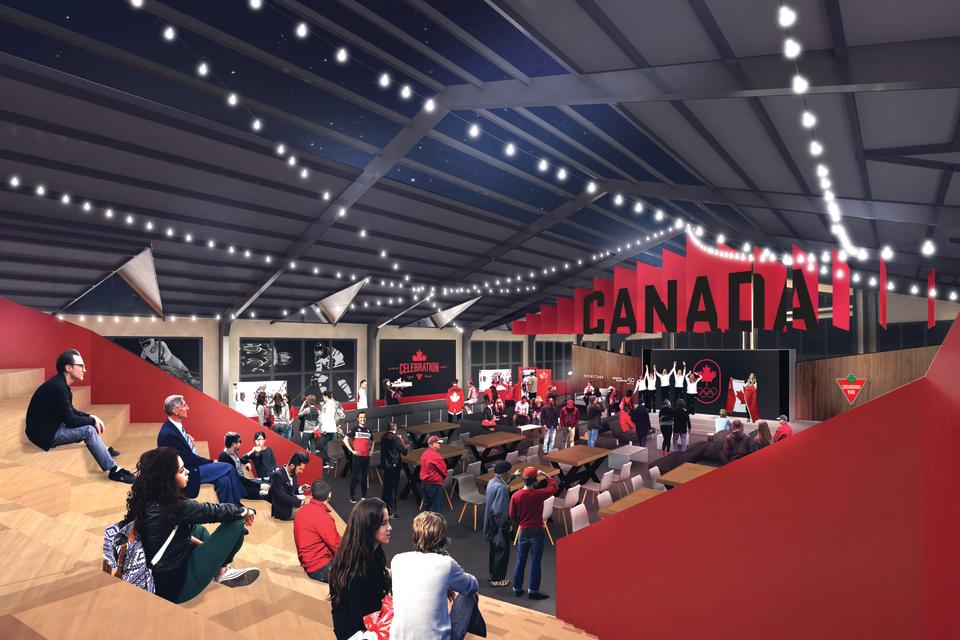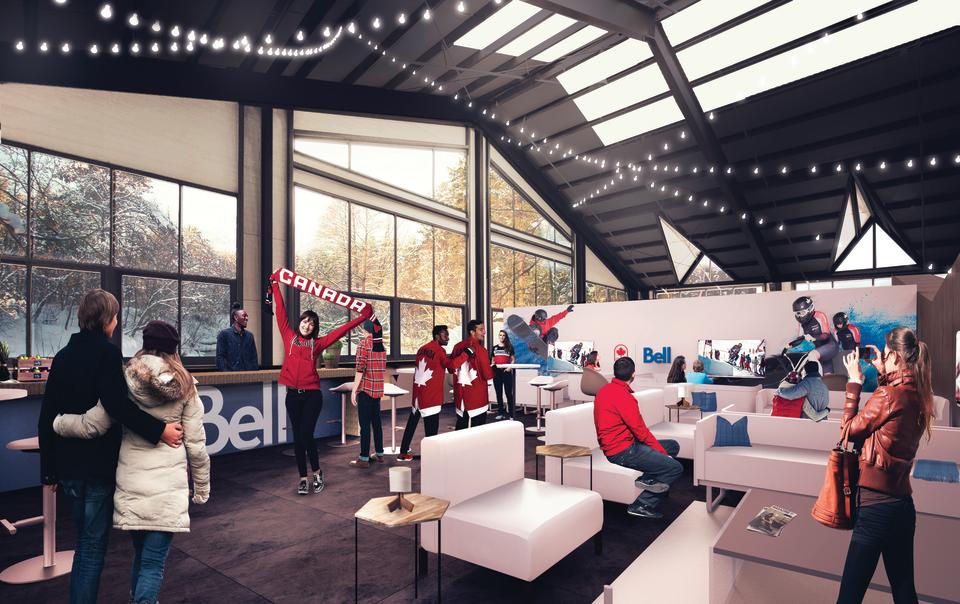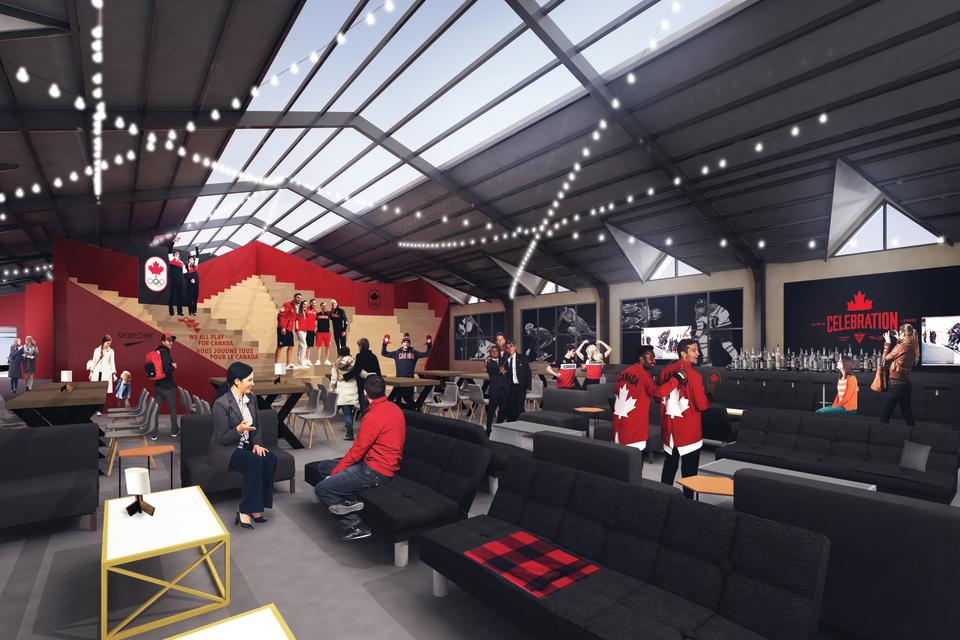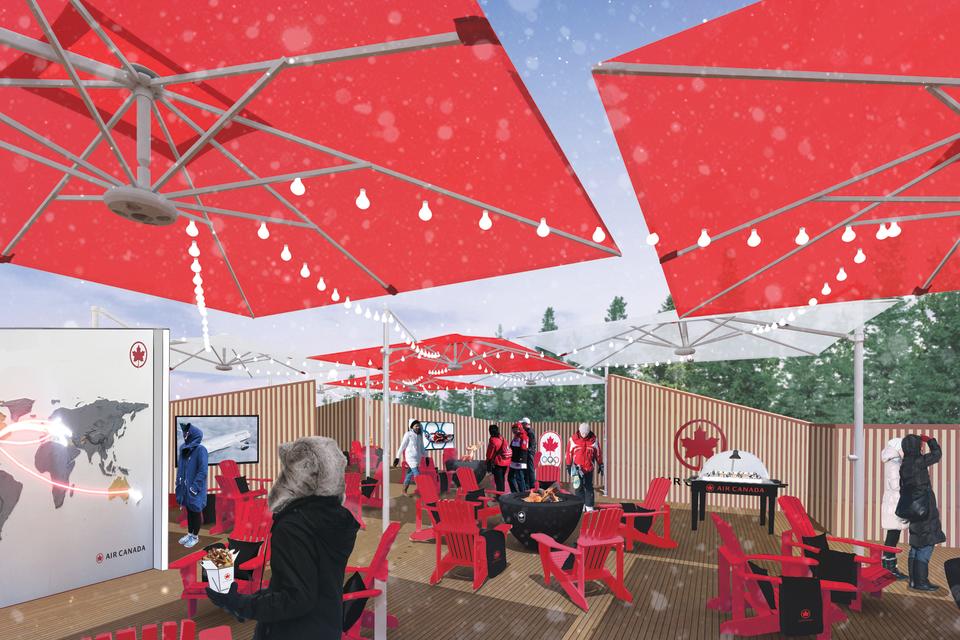Building Canada Olympic House: How Sid Lee transformed Canada's Olympic home
For two weeks in February there will be a little slice of Canada in Pyeongchang, South Korea.
It’s called Canada Olympic House and it will be the epicentre of everything representing Team Canada and Canada as a country during the Winter Olympics. For the duration of the competition it will be our public face there, attempting to encapsulate everything Canada is about right now to the visiting fans, tourists, athletes and their families.
Taking on the conception and creation of this incredibly daunting task is Sid Lee, the Montreal-based international ad agency behind the re-branding of the Toronto Raptors and the We the North campaign. A campaign that demonstrates their acute understanding of the intersection between sports, culture and community.
Actually, the last time they worked on anything for the Olympics it was for Adidas’ global campaign as the lead sponsor of London 2012. Back then, the firm was tasked with making sports like javelin and shotput interesting for Adidas’ target market of 13 to 19-year-olds.
You may think constructing the Canada Olympic House is a much easier task by comparison: build a longhouse, mount some big screen TVs, make Molson’s now iconic red fridge the focal point of the room, ensure there’s ample amounts of poutine, throw in a free toque for each guest and you’re done.

But ever since the start of the Own the Podium program and Team Canada’s home-turf dominance of the overall medal count during Vancouver 2010, Canada’s push for continued Olympic greatness has only grown, as evidenced by the aggressive number of medals it is expected to win in Pyeongchang: with the current roster of athletes, predictions forecast Canada will take home 33 medals, seven more than the impressive run in Vancouver.
Sid Lee aimed to make a Canada Olympic House that reflects that desire for excellence.

A design for a confident Canada
“This is true for Canada overall. It goes beyond sports to politics, how we manage our country, how we interact as a people and our position in the world,” says Vito Piazza, president and founding partner of Sid Lee Toronto.
“There’s never been a better time for brand Canada and what that means is when we look at our Olympians. They’re the physical manifestation of how we want to be perceived and that’s not overly aggressive, but definitely world-class.
“They are living proof of what we’re capable of and Canadians are getting a lot more energy and a lot more motivation from them.”

The Canadian Olympic Committee [COC] knows this too, which is why when they met with Martin LeBlanc, chief architect and co-founder of Sid Lee Architecture in Montreal, and his team there was one issue they had with previous Canada Olympic Houses.
“We met with the chief marketing officer of the COC and they expressed in a casual conversation that those Canada Olympic Houses they did in the past carried only some aspects of their potential and he wanted to create something more meaningful,” says LeBlanc.
The team at Sid Lee answered that challenge by representing Canada’s current state of mind through the intersection of culture, community and sport.
LeBlanc says the COC’s marketing officer was concerned previous Canada Olympic Houses weren’t living up to their full potential and the Canadian identity. For one, LeBlanc says Canada is about welcoming others, and the new space should represent that, as well.
“As a brand, Canada has a unique position worldwide,” says Piazza. “The way Canada is seen in the world is certainly different. On the one hand, there’s a certain humility, but also a competitiveness, a positive energy and a sense of community.”

From a design perspective, that meant more boldness – a Canada that is much more upfront with its accomplishments – which is why fans inside Canada Olympic House will see bold swatches of red and white with huge posters showcasing the athletes competing at the games in their most competitive state. Community also played a very important role.
“If you would imagine a very good party in Canada where a lot of different people are coming together, we’re trying to create an environment that has that feel,” says Piazza.
“I wanted this to be a really great moment as fans, athletes, families and business people unite because of amazing performances we’re going to see everyday and I want this to happen in a very simple way,” says Leblanc. “I want people to connect, I want people to have a good time and have a place to call their own. It’s not so much the objects in the space, but the people within and the opportunity to gather and come together.”
What Sid Lee wanted to create was a sense of home, so unlike previous years, they created different areas within the space. Sure, there are places to relax with your friends and watch the events, but there’s also places to party and places to meet the athletes themselves for autograph signings and meet-and-greets.
Canada for the community
While there is a section with stadium seating for all the hometowners cheering on the red and white, the stands are much more integrated and it feels like the party is happening all together. Community was also an integral part of the development of Canada Olympic House itself. Unlike the other houses in the Olympic Village, which Leblanc posits may have hastily put up their shingle for two weeks only to leave without leaving their mark, Sid Lee spent time meeting with community leaders in Pyeongchang finding out how they could limit their environmental footprint while leaving behind a legacy that the surrounding community can actually use.
“Right beside the building that we use there was this patch of land that wasn’t being used really, so we decided to extend the building and create a terrace for the two weeks the Canadians are going to use the building,” says Leblanc. “The mayor of Peyongchang was thrilled by what we were doing and wanted to keep our layout after the Olympics so it can used by citizens.”
“It was a really nice adventure in what it means to be Canadian,” he adds. “The construction of Canada Olympic House was part of a process and part of local consultation with community leaders and we worked with a Korean design firm and we’re leaving behind the terrace for community use once we leave. The whole process was very Canadian.”

Even the Canadian Olympic Committee’s leading sponsors got into the act. Every Olympic delegation relies on sponsorship dollars to get their dreams off the ground and part of the challenge that went into the Canada Olympic House’s construction had to do with integrating leading sponsors RBC, Canadian Tire and Molson without corporatizing it too much and losing that homegrown community atmosphere. After all, Canada was the only country allowing anyone – not just Canadians – to come in and partake in the festivities and that welcoming feel also had to be maintained.
“The COC doesn’t have a lot of money to make Canada Olympic House possible and it’s only there for two weeks so they don’t want to blow their entire budget, which is why they rely on corporate sponsors,” explains LeBlanc. “From the outside looking in, I know it can seem like a cash grab on the part of these sponsors, but ours have really contributed to making Canada’s Olympic House special.”
For example, Canadian Tire donated the furniture, Hudson’s Bay helped with some blankets and cushions and Molson provided beer and their iconic fridge. Although they certainly had corporate goals and wanted their names to be shown, their contribution to Canada Olympic House went far beyond, as Leblanc says, “just take our money and we’ll leave.”
The Mr. Lee Mystery
But what about Sid Lee? What are its goals in all this now that construction is complete on Canada Olympic House and early reactions have been largely positive. How do they plan to leverage this unique showcase on the world stage?
“Canada Olympic House is the perfect expression of our goal to bring the holistic experience of sport, community and culture to life,” says Piazza. “We are from Canada and we are one of Canada’s most successful companies in terms of international expansion with five offices around the world. Just like how Canadian athletes are an expression of Canada on a global stage, for us it shows others that we can maintain our Canadian heritage, while still doing work that can travel globally.”
For him and Sid Lee, there’s no better value proposition than being able to meet people from around the world in an environment that they helped bring to life. Not bad for a company that was started in 1993 by a group of twenty-somethings who knew nothing about advertising, couldn’t get anyone to look at their portfolios and had to learn everything they knew by experiencing it first hand.
Add to that, there’s not even a Sid Lee at Sid Lee. It’s simply an anagram of their old name Diesel to avoid brand confusion with Diesel Jeans.
“The idea of having a persona that we create as a group is very alluring,” says Piazza. “People always ask, ‘Am I ever going to meet Sid Lee?’ and I answer, ‘You meet him every time you meet us – Sid Lee is all of us.”
Download the Yahoo Finance app, available for Apple and Android.


